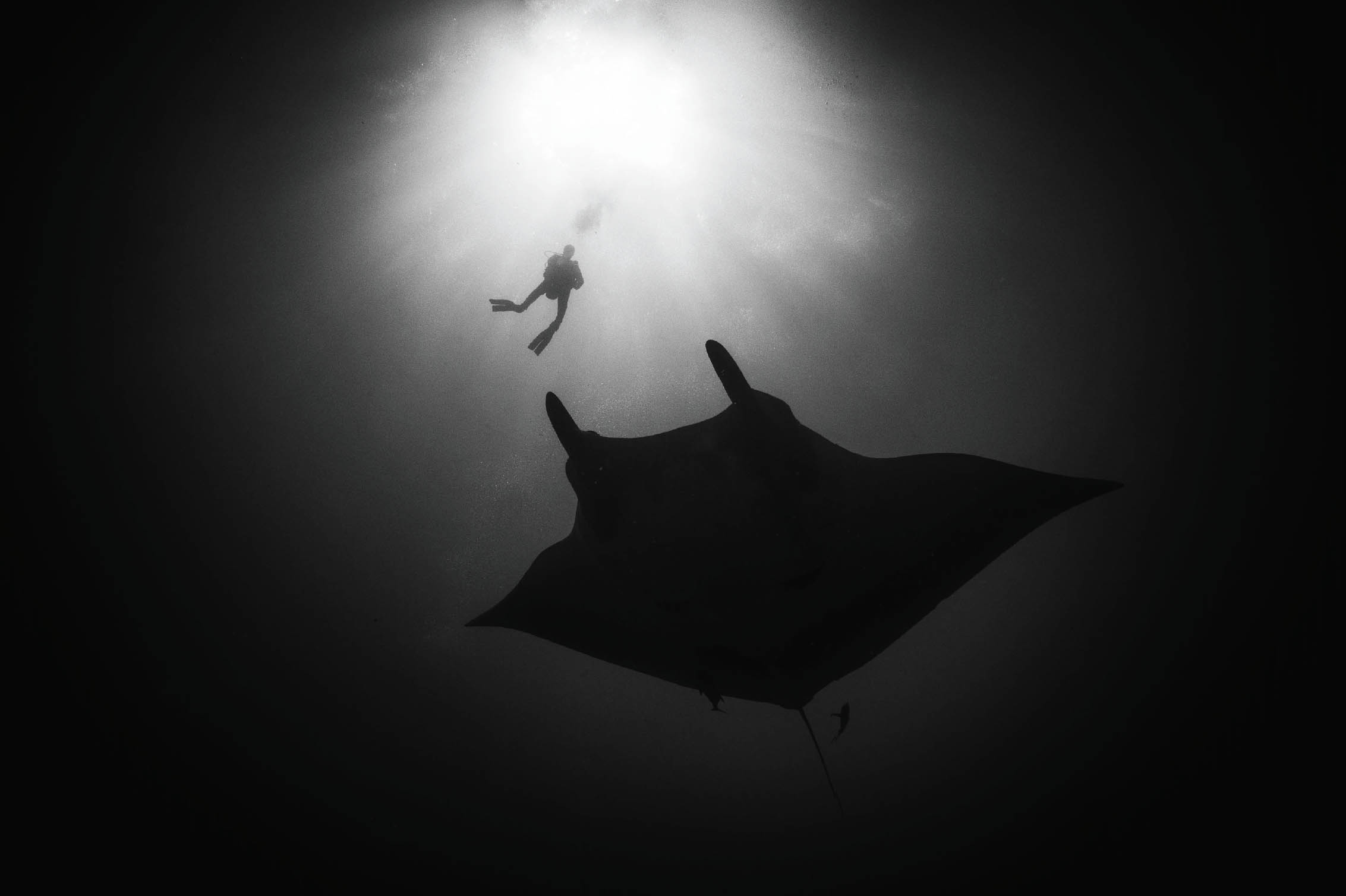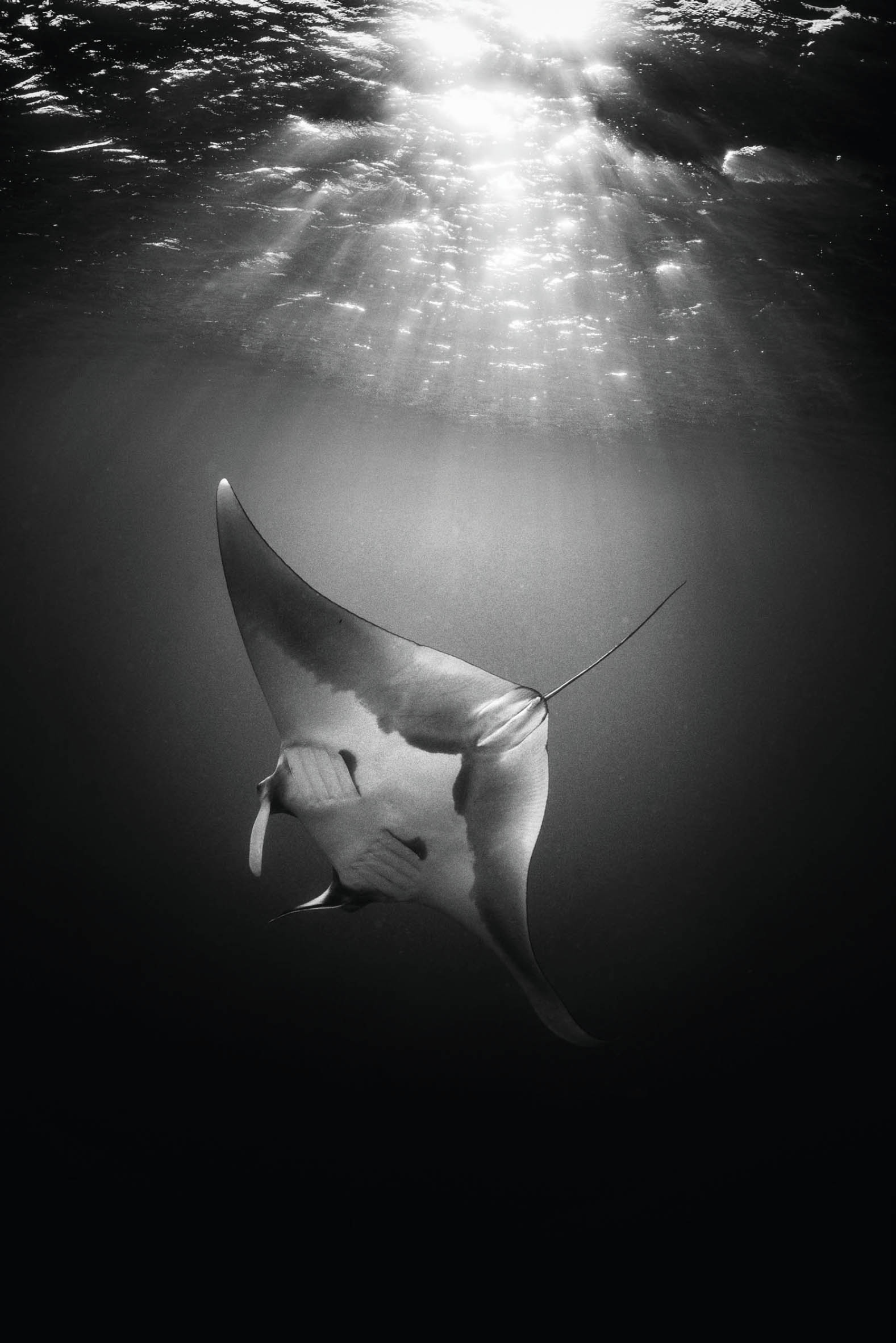15
How Can I Use Space and Scale?
THE EYE MOVES AROUND THE FRAME in much the same way as we move around the physical world: we take a path, we are led by what interests us, and we get trapped or blocked by things that stand in our way. In large, brightly lit rooms with high ceilings, we feel differently than we do in small, dark rooms with low ceilings and no windows. Our experience of a photograph is similar, despite it being only two-dimensional. In fact, I wonder if our experience of photographs can be even more claustrophobic because they lack that third dimension; the elements, all flattened, don’t give us as much room to move among them.
If we want to make images that have a sense of space, then we have to be conscious of the desire for that space and learn how to create it. The opposite is also true; if we want to photograph subjects that are cramped and uncomfortable, then a good first step to being aware of the possibilities is to ask how we can use space to create that feeling.
The simplest way to begin thinking about the use of space within a photograph is to remember that the frame is a very real and often impenetrable border. It exerts visual mass, and when we consider the elements within the frame, we must remember not only their relationship to each other but to that frame. An image in which the elements all come right to the edges of the frame will do a couple of things that can make the image a less pleasurable experience to read. And that displeasure or difficulty will either hinder your efforts to express your subject a certain way or help you do exactly that.
An image in which the elements touch (or come close to touching) the edges of the frame feels unwelcoming. It makes us visually claustrophobic and looking for the exit. It prevents the eye from taking the kind of journey around the frame that makes us stay longer and want to take our time with the details. At first glance, this experiential truth seems to fly against the rule so many of us learn in the beginning: fill the frame! The fact that it is how we fill the frame and why that is important, not just that we do it, should make us all suspicious of any blanket statements that sound overly simple.
The idea of filling the frame is a good one, but I prefer to express it differently: isolate the subject and get as close as you need to give that subject its full impact.
Some ways of doing this are better than others. Imagine you are making a portrait of a woman. You could photograph her so you get the full outline of the head and all the details of the face, with room to move visually between the head and the edges of the frame. Maybe you see a little of the background behind her. It’s a nice frame and there is plenty of negative space, which is the space that is not the subject but helps define it and give the eye room to move. That’s one way to fill the frame with a portrait. The subject is well isolated, with no distractions, and there is plenty of room to move. It’s elegant.
Another option is to get really close. So close that you see most of that astonishing face, but not so much that you see the edges of the head. The subject here is just the face, the details, the expression. It’s deeply intimate. You’ve filled the frame, but even so, there is room between the most visually massive features (like the eyes, the lines that form the nose and the mouth) and the frame. I could stare at this for hours.
A third way is to split the difference. We often take this approach as beginners, and some of us never grow out of it. You fill the frame too much to give me room to move but not so much that you give the face its own role. The line that forms the shape of the head is so close to the edge of the frame that it creates tension. It creates small areas between the head and the frame that trap my eye. My eye doesn’t so much move around the frame as it feels tense and wonders why you just crammed it all in. Sure, the frame is full, but to what end? The “rule” has been obeyed, but not such that you’ve made an elegant, intimate, easy-to-read photograph.
Is that okay? Am I in danger of making a foolish rule of my own? Yes, it might be okay. There may well be cases where you want this kind of tension, when you want to make me feel uncomfortable because the subject itself makes you feel that way and you use every tool available to make me feel cramped, tense, distracted, and claustrophobic. My larger point is this: what we need are not rules, such as “fill the frame,” but guiding principles that say, “If I consider this, and do that, it will result in this, or that.” Then we make choices according to our vision.
Consider how space in the frame makes you feel. If you want a feeling of vastness, then your use of space in the image will help or hinder that. You might also think of this in terms of scale. We’ve explored the idea of contrast, and scale is essentially a contrast of size and space. Usually scale is created by showing a contrast between one element and another element of a known size. We feel how small the child is when she’s standing beside a giant tree; we notice how large the elephant is when it’s standing beside a car. That’s scale, and it helps us not only to make sense of proportions but also to feel them.
A sense of scale can also be created by contrasting an element with the frame itself. Yes, the child is at the foot of a large tree; we get it. But go wider, give me more space around that child, and let me see just how large the tree is—make the child small relative to the frame itself—and you’ll create a much greater contrast. Of course, there’s a point at which going too wide will make the image fall apart, and you’ll lose the impact you were trying so hard to create, but there’s nothing to be lost by experimenting.
One of my favourite photos from an adventure in the Gobi Desert in Mongolia is an image I made of a photographer on the sand dunes. He’s small, not only in relation to the large dunes, but to the frame. He probably fills only five percent of the frame, if that. I have photographs in which he’s larger, but they lack impact. And I have photographs in which he’s smaller, but they lack information as well as impact. Instead of the viewer thinking about how small the photographer feels in such a vast desert, they wonder what that small dark element in the frame might be.
This is not the end of the conversation about the use of space. We’ll explore it further when we discuss depth in the next chapter. For now, think about space on a two-dimensional level, and ask yourself:
- What decisions can I make that will allow the eye to move more freely around the frame?
- Is my subject better expressed with a more liberal use of space, or would a more constricted feeling be more appropriate? Try it! Find out!
- Am I aware of elements intersecting the frame? Are they impeding the movement of the eye?
- Am I filling the frame with my subject but sabotaging that effort by neglecting the idea of negative space?
- Could I use scale, or contrast in size between elements, to exaggerate the experience of that size?
- Could I use the size of the subject relative to the frame itself to imply something about that subject or bring a more spacious feeling to the image? Would the opposite serve me better?
I hope you’ve taken to heart my suggestion to study both your images and the images of others in connection to all the questions that I’m putting forward here. The way to learn all of this—to really make these ideas your own—is to ask the questions, to think about them for yourself. And while you must eventually do that with the camera to your eye, it can begin with photographs in front of you. How did the photographer use space? What decisions did the photographer make with negative space or scale? What would this photograph look like if the photographer made different choices? Would it feel the same way? Why?
Revillagigedo Archipelago, Mexico, 2017
Revillagigedo Archipelago, Mexico, 2017
Revillagigedo Archipelago, Mexico, 2017
Revillagigedo Archipelago, Mexico, 2017




